The other night I was awakened at 3 AM when the electricity cut out for the eighth time, the AC unit sputtered to a halt, and the guard cranked up the generator, which sounds like 100 of those machines at Home Depot that automatically shake your paint can.  As I was lying in bed with that soothing, lullaby-like background noise, I started to reflect on this school year which, surprisingly, is drawing to a close.
As I was lying in bed with that soothing, lullaby-like background noise, I started to reflect on this school year which, surprisingly, is drawing to a close.
Seems just like yesterday when I stepped foot for the first time in my classroom at the American International School of Bamako. Before our August 2012 arrival the school had been shuttered for four months, closing in April as a result of some, um, minor issues in the country. Okay, maybe they weren’t so minor (and mom and mom-in-law, you can just skip over this next part and head straight to the next paragraph). Maybe there was a coup that effectively ended Mali’s record as the West African country with the longest and most stable democracy. And maybe this led to the total destabilization of Mali’s north and allowed crazy Islamists to take over a few towns up there that required thousands of French troops to flush them out and a huge contingent of UN troops to keep them out. But I digress.
Anyway, when I walked into my new classroom it had the look of a suddenly evacuated classroom that had been empty for awhile, sort of like when the humans in The Walking Dead went into that abandoned school looking for shelter from the zombies, although I can assure you that I have not spotted a single zombie on the school grounds here yet. Written 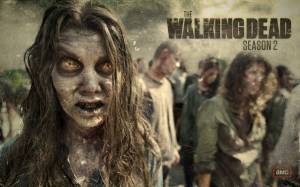 on the board in dry erase marker that wouldn’t erase was “April 5, 2012” and “It’s the zombie apocalypse!” Wait a minute, I think that last sentence was from The Walking Dead, but you get the idea.
on the board in dry erase marker that wouldn’t erase was “April 5, 2012” and “It’s the zombie apocalypse!” Wait a minute, I think that last sentence was from The Walking Dead, but you get the idea.
Every surface was covered with a layer of Tang-colored dust. There was a chocolate bar in the teacher’s desk (and yes I tried it and it tasted old but I ate it anyway). And the student desks and cubbies were still stuffed full of half empty notebooks with 3D covers (I snagged a 3D Transformers notebook that I proudly used all year long), dried out markers, desiccated foodstuff, love/hate notes, socks, half-full water bottles, and the like. I really did feel like one of The Walking Dead humans scavenging for goodies as I picked through everything in this room (and the room next door), creating stockpiles that I used all year long.
Once my classroom environment seemed more conducive to learning and less like a potential battleground for the undead, I was ready to plan my lessons. And then it hit me like a crowbar across a zombie’s crumbling skull…here at AISB I was free from the shackles of high-stakes testing! I’m sure I levitated off my chair a few centimeters.
I looked on my desk, and there was no gigantic binder swollen with pages of information about the formats of questions on the state test or which benchmarks to focus on and which to ignore. No stack of graphs showing me how pathetic my school was compared to the test scores of other schools. No school “data wall” made of color-coded index cards, two per student, showing their most recent state test score and taped to the wall in a massive 10’ x 30’ display that showed us which students to really pay attention to and which can function independently (e.g. which ones you can ignore).  No faculty meetings in which we were told to put the arts, social studies, field trips, and guest speakers “on the backburner,” (e.g. until the state test was over in April). And no know-it-all school district people skulking around the school, popping into our classroom to make sure we were focused on state test prep and not something useless like learning about the three branches of government or learning to speak a foreign language.
No faculty meetings in which we were told to put the arts, social studies, field trips, and guest speakers “on the backburner,” (e.g. until the state test was over in April). And no know-it-all school district people skulking around the school, popping into our classroom to make sure we were focused on state test prep and not something useless like learning about the three branches of government or learning to speak a foreign language.
Back in Florida a few years ago I wrote a Grade 4 language arts unit based on a short story about the Harlem Renaissance. I really couldn’t imagine teaching about the Harlem Renaissance without exposing my mostly African American students to the wonderful music, dance, literature, and visual art from this exciting time in U.S. history. 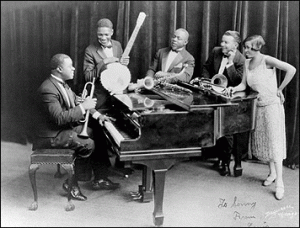 So I was about to begin teaching a lesson from that unit when in walks a gaggle of District “experts,” sour-faced minions who lined up across the back of my classroom with the body language of an executioner—no slight welcoming head bob or quick smile to put me at ease. They clutched notebooks and iPads (because you can look even more official when you carry an Apple product) and had that “so-get-teaching-so-we-can-criticize-you-and-move-on-to do-it-some-more” kind of look.
So I was about to begin teaching a lesson from that unit when in walks a gaggle of District “experts,” sour-faced minions who lined up across the back of my classroom with the body language of an executioner—no slight welcoming head bob or quick smile to put me at ease. They clutched notebooks and iPads (because you can look even more official when you carry an Apple product) and had that “so-get-teaching-so-we-can-criticize-you-and-move-on-to do-it-some-more” kind of look.
Frankly, I wasn’t ruffled in the least. Judging by their fashion and hair choices alone, I knew I didn’t have a whole lot to worry about. Although the lesson I was about to teach wasn’t as drill-and-kill/worksheety as they probably hoped for, I was a dutiful soldier because I had done everything on the district checklist:
- objectives written on the board in kid-friendly language (check!)
- monthly skill schedule posted next to the door, although it was kind of a fake one I did for show (check!)
- “anchor chart” of the skill I was teaching stuck to the wall (check!)
- detailed lesson plans—complete with every tested benchmark color-coded—on my desk for all to see (check!)
- all creative inclinations, emotions, and personal opinions drained from my body (alright, so I didn’t do everything on the checklist)
Bring it on, I thought to myself.
I began by playing a blues song from the Harlem Renaissance–Graveyard Dream Blues  by Bessie Smith–and asked the kids to pay close attention to the lyrics, any patterns they noticed, and the music itself. Afterwards I charted their observations: it was about a sad subject, certain lines were repeated, and the music was slow and gloomy.
by Bessie Smith–and asked the kids to pay close attention to the lyrics, any patterns they noticed, and the music itself. Afterwards I charted their observations: it was about a sad subject, certain lines were repeated, and the music was slow and gloomy.
Next I played a jazz song from the same era–Harlem Hospitality by Cab Calloway)–and again asked the kids to listen carefully.  While the song played the students bounced and swayed to the music—I mean it was Cab Calloway music after all! However, those goofs in the back stood as still as statues. Really. So then I charted the kids’ observations: this song was about joyful things, the lines in the song were short and jumpy, and the music was fast and fun. We spent a few moments comparing and contrasting the two songs in a Venn diagram since compare/contrast was my targeted reading skill.
While the song played the students bounced and swayed to the music—I mean it was Cab Calloway music after all! However, those goofs in the back stood as still as statues. Really. So then I charted the kids’ observations: this song was about joyful things, the lines in the song were short and jumpy, and the music was fast and fun. We spent a few moments comparing and contrasting the two songs in a Venn diagram since compare/contrast was my targeted reading skill.
Next I showed PowerPoint slides of two Langston Hughes poems that we read aloud. After they got a good feel for each poem I explained that one of these was considered a “blues poem” and one was a “jazz poem,” and it was up to them to decide which was which. This required them to refer to the notes about the blues and jazz songs, so in teams they tried to match the characteristics of the poems with the songs.
The discussion was animated and sort of fun to watch—they were singing lines from each song, arguing about what certain stanzas meant (“Seriously Kayla, do you think a sad person shimmies and shakes? That’s jazz, okay?”) , and pointing out patterns in the songs and poems. Eventually they did correctly identify each poem, and we spent some time reflecting on why a poet would write in two such very different styles. Their comments showed real critical thinking, and even better they asked me to play the songs again (and again). They were also now instant fans of Bessie Smith and Cab Calloway.
I was thrilled and so proud of my students. But the Sour Squad in the back stood motionless, like wax figures in Madame Tussaud’s museum–just not as lifelike, though.  They solemnly filed out of my room and into the class next door to spend some more quality time glowering. Even though a cloud of gloom surrounded them, I was somewhat hopeful that even they could clearly see that my students (a) were actively engaged in reading, (b) had thoughtfully applied the skills of comparing and contrasting, (c) tackled poetry that Grade 4 students seldom tackle.
They solemnly filed out of my room and into the class next door to spend some more quality time glowering. Even though a cloud of gloom surrounded them, I was somewhat hopeful that even they could clearly see that my students (a) were actively engaged in reading, (b) had thoughtfully applied the skills of comparing and contrasting, (c) tackled poetry that Grade 4 students seldom tackle.
But it was not to be. In the voluntary feedback session that I decided to attend (along with our principal and just one other colleague who showed up), the leader of this pessimistic pack–a PhD, mind you–first addressed my colleague and rambled on in some gobblety-goo edu-speak laced with plenty of buzz words (that year they included “efficacy” and “laser-like focus”) and plenty of acronyms (at a two day workshop I attended that year I recorded 67 acronyms the speaker used). Then she sighed deeply and said to me in an emotionless tone—without making eye contact of course–something like, “I really don’t even understand what you were doing.”
 At that moment I’m pretty sure I looked like an outraged cartoon character with steam shooting out of both ears and my enlarged eyeballs boomeranging out of my head. My principal, noticing my reddening face, blurted out something like, “Well, Dr. Dourbutt, you have to understand that Jeff uses many different techniques like arts integration and….” But Dourbutt cut her off and started with the rambling edu-speak again. So then I cut her off.
At that moment I’m pretty sure I looked like an outraged cartoon character with steam shooting out of both ears and my enlarged eyeballs boomeranging out of my head. My principal, noticing my reddening face, blurted out something like, “Well, Dr. Dourbutt, you have to understand that Jeff uses many different techniques like arts integration and….” But Dourbutt cut her off and started with the rambling edu-speak again. So then I cut her off.
“Have you ever taught at a school like this, with mostly African American students living below the poverty level, smack dab in the middle of the worst crime-filled neighborhood in town?” I asked in a fake, calm voice.
Before she could answer I added, “Do you know that every year my student’s high-stakes reading test scores exceed those of the school district and the State of Florida? And I don’t use test prep workbooks or test prep worksheets and I don’t drill-and-kill them to death. And they love to read.” I was on on fire and felt like I had those eyes the demons have in that show Supernatural.
Then I went on a bit of a rant, schooling her on the research-based approach of arts integration and how my students need to understand the amazing cultural contributions of African Americans and reminding her as often as I could that I was a National Board Certified Teacher in literacy and, oh yeah, that I was a published author and at least my shoes were well cared for and polished instead of all scuffy like hers. Well, I didn’t say that shoe part but I sure as hell wanted to.
Then I did one of those little moves from the movies that you always want to use for real. I curtly said, “Well, I’m done here,” slammed my notebook shut, and got up and walked out. Except I walked out in the wrong direction and had to embarrassingly circle back and pass that same room again, where I heard my principal trying to smooth things over the best she could.
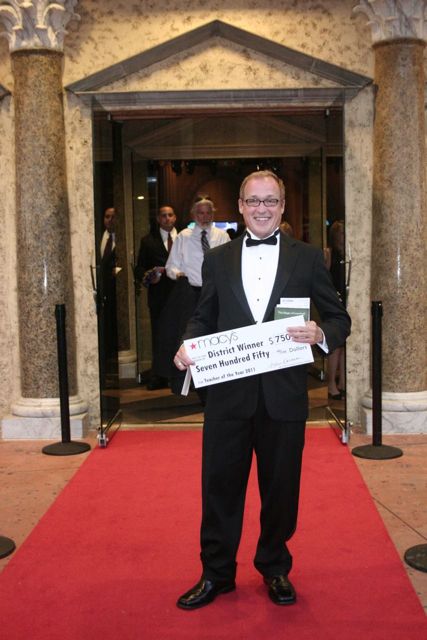 Well guess what? There is actually a happy ending to this story. That very same year I was chosen Palm Beach County Teacher of the Year based on the “innovative instructional approaches” I used. I was honored out of a pool of 13,000 teachers for using techniques that ol’ Dr. Scuffy Shoes didn’t even understand! And of course I used every speaking opportunity required by this award to retell this ironic Dr. Scuffy Shoes story, even though it made for some awkward laughter once when the crowd was mostly school district office folks.
Well guess what? There is actually a happy ending to this story. That very same year I was chosen Palm Beach County Teacher of the Year based on the “innovative instructional approaches” I used. I was honored out of a pool of 13,000 teachers for using techniques that ol’ Dr. Scuffy Shoes didn’t even understand! And of course I used every speaking opportunity required by this award to retell this ironic Dr. Scuffy Shoes story, even though it made for some awkward laughter once when the crowd was mostly school district office folks.
Fast forward two years later, and here I am in Mali where I’ve successfully escaped from Planet Testobsessed. I’ve landed in an international school totally unaffected by corporate “reformers” like Bill “I didn’t finish college but I know what’s best for teachers” Gates and Michelle “My kids go to private school” Rhee. But get this…we still give a normed-referenced test (the MAP). It’s a couple of short computer tests we give at the beginning and ending of the year, and we receive instant results. We use that immediate data, along with many other measures like classroom observations, class work, teacher-created tests, parent conferences, etc., to plan and tweak our instruction to meet each kid’s needs. Radical, huh?
However, unlike in the U.S. the results from that one test do not determine my salary or bonus or whether or not I’m fired or whether or not I get an ulcer. And my school is not assigned a grade based on the results, and punished with a spanking or a dunce cap if we get a C.
And best of all, we don’t have any stupid test pep rallies, a bizarre phenomenon sweeping the nation. Here’s one from a school in Indiana with the teachers performing “Test Me Maybe,” a parody of, well do I really have to explain that one?
Nope, here in Bamako we don’t spend a minute of energy composing high stakes test-related songs. Here’s part of a test rap song I found online, this one written for Florida’s high-stakes test, the FCAT:
Alright, now I know y’all hate the FCAT
But ya got pass that
So you don’t mess around and get held back
Let’s do somethin’ about that
Say I’m gonna pass the FCAT
You need to pass the FCAT
We need to pass the FCAT
Whatcha all know, gonna blast that
Y’all really wanna know about the FCAT
Whatcha need to know to try and pass that
Why listen up close I’m ‘splaining that
How to do good on the FCAT
I know ya’ll know where the lie-berry’s at
And most ya’ll seems to got a backpack
So you gots the books so you can study that
Got to put in work to pass that.
Gosh I hope those Florida kids do well on the grammar portions of the FCAT.
I’m also pleased that at AISB we have no high-stakes testing flash mobs. I know you’re thinking I made that one up. Nope. Here’s one from a school in Missouri.
We also don’t have to bribe our students to do well on the test with rewards, such as a limo ride to the Golden Corral buffet, a post-test dance party, or making the principal kiss a pig. In this video a teacher explains how his students can “win some awesome prizes for rocking the FCAT,” including iPads and flat screen TVs.
Geez, all of this testapalooza stuff sounds funny at first–until you realize how really sad it is. At least all of those activities are supported by loads of research proving their effectiveness, and students are sure to look back fondly on these activities as some of their favorite school memories. Okay, not really.
The upside of being cured of test-mania disorder is that I have plenty of time to….wait for it….TEACH! Now don’t get me wrong, it’s not like a free-for-all here at school. We abide by international academic benchmarks and a set of school beliefs that brazenly encourage resourcefulness, creativity and self-expression. That’s a bit of a departure from my previous world where we were encouraged to be dependent, robotic, dullards. As radical as it sounds, here we are actually entrusted to use our own talents and expertise to create lessons that meet these guidelines. I’m thinking Dr. Scuffy’s head would explode if she ever visited our school.
So, in the interest of preventing cranial explosions, I’d like to dedicate my big finale to Sgt. Scuffy and her band of bothers. Here is what happens when an educator goes through high-stakes testing detox and lands in a magical (albeit dusty) world where creativity and critical thinking are valued more than high-stakes test scores. Welcome to my classroom…..
Anti-Malaria Man to the Rescue
If there’s one thing my partner Jamey taught me, it’s that science should be cool (he once bleached his hair in class to teach his students about re-dox reactions). So I had my kids write and illustrate (in French and English) a graphic novel about malaria, a disease that infects up to 2 million people a year in Mali. It’s a story about the superhero Anti-Malaria Man (with leotards and boots and the whole outfit thing) that teaches about malaria transmission, treatment, and prevention. Our PTO funded the printing and next week we distribute copies to local school children in a poor community near our school. My kids learned multiple science benchmarks, created a smashing plot, became fantastic illustrators, and will never look at a mosquito in the same way again. Check out the finished product: Adventures of AMM (English)
It’s a story about the superhero Anti-Malaria Man (with leotards and boots and the whole outfit thing) that teaches about malaria transmission, treatment, and prevention. Our PTO funded the printing and next week we distribute copies to local school children in a poor community near our school. My kids learned multiple science benchmarks, created a smashing plot, became fantastic illustrators, and will never look at a mosquito in the same way again. Check out the finished product: Adventures of AMM (English)
Cool School Rules
 Rather than bore students on the first day of school with a laundry list of rules they must
Rather than bore students on the first day of school with a laundry list of rules they must  follow (no teasing the school tortoises, no touching Niger River water
follow (no teasing the school tortoises, no touching Niger River water
without gloves, etc.) I allowed them to take the lead. I taught them about artist Keith Haring, and how his simple drawings communicated complex messages. I challenged teams of students to create a Haring-style poster–using mostly illustration–that encouraged positive behavior. Our director had these duplicated and put up around school.

My Face is Green
The best way to get to know my students is to first see how they view themselves. So I introduced them to artist Andy Warhol, and how he used unconventional artistic methods to portray celebrities. Students created their own Warhol-style portraits, expressing their personality through color they applied to a black and white photo of themselves. Then they wrote an artist’s statement to explain their crazy artistic decisions. I’m hoping to one day sell these for millions, just like Mr. Warhol did.
It’s Vocabulary Instruction, Not Waterboarding
In my student days, vocabulary instruction began with a new list of random words from the teacher on Monday, finding definitions in the dictionary Tuesday, writing sentences using each word Wednesday and Thursday, and a spelling test on Friday. If we missed a word we had to write it 10 times. I’m sure my teachers found these techniques right out of the “How to Make Language Arts Torture” handbook.
In my class, our vocabulary words are taken directly from the novel we are reading—a couple of words each day from the chapters we are about to read. I select words that are key to the story and that will be useful to them in their own life. Students create a 3-column chart (word, definition, sketch). I read them the passage in the book that contains each word, and student teams use context clues to determine the definition. Then they make a quick sketch that will remind them of the definition. Finally, each day I check their understanding of the words by having them create a tableau (frozen pose) showing the definition of the word I say.  They might each individually do a tableau at the same time, or they might work in a team to create a tableau. Every day they beg me to let them do “just one more” tableau. I can’t recall begging my teacher to please let me look up “just one more word in the dictionary.”
They might each individually do a tableau at the same time, or they might work in a team to create a tableau. Every day they beg me to let them do “just one more” tableau. I can’t recall begging my teacher to please let me look up “just one more word in the dictionary.”
Cubist Character Portraits
After reading the novel Shiloh and focusing on identifying character traits, I gave the students a quick overview of Cubism, the early 20th-century art style from where objects are analyzed, broken up and reassembled in an abstracted form, and where the artist depicts the subject from multiple viewpoints to represent the subject in a greater context (thank you Wikipedia).  Then I asked them to choose one character from Shiloh and create a cubist portrait. It was certainly a challenge to represent the character traits in a more abstract way, and required a through understanding of the physical, emotional, and intellectual aspects of a character. They also explained their portrait in a written artist’s statement, which made their seemingly bizarre artistic decisions seem a tad less bizarre. Sometimes.
Then I asked them to choose one character from Shiloh and create a cubist portrait. It was certainly a challenge to represent the character traits in a more abstract way, and required a through understanding of the physical, emotional, and intellectual aspects of a character. They also explained their portrait in a written artist’s statement, which made their seemingly bizarre artistic decisions seem a tad less bizarre. Sometimes.
Abstractly Speaking
After a unit on the Japanese-American internment camps in the U.S. during WWII, students chose from three poems written by prisoners from the camps.  After analyzing the type of emotion the poet expressed, I gave the students a quick Abstract 101 lesson, showing them how the artists used only shape, line, and color to express emotions. Then students then created an abstract piece of art that visually expressed the emotions in the poem they chose. After this experience, I’m pretty sure these kids will never stand in front of an abstract painting at a museum and say, “That’s stupid. Anyone could paint that.”
After analyzing the type of emotion the poet expressed, I gave the students a quick Abstract 101 lesson, showing them how the artists used only shape, line, and color to express emotions. Then students then created an abstract piece of art that visually expressed the emotions in the poem they chose. After this experience, I’m pretty sure these kids will never stand in front of an abstract painting at a museum and say, “That’s stupid. Anyone could paint that.”
It’s Alive!
It’s one thing to read a novel, but another to live it. With story dramatization the kids act out a scene from a novel we just read, taking on the role of not only humans, but also doors,  dogs, trees, and caves.
dogs, trees, and caves. 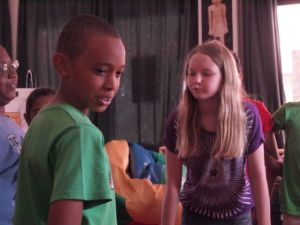 Before we begin we discuss the scene—the motives of the characters, the part of the plot where we are at, “what’s between the lines.” Then as I narrate, they create dialogue and
Before we begin we discuss the scene—the motives of the characters, the part of the plot where we are at, “what’s between the lines.” Then as I narrate, they create dialogue and  action that brings the scene to life. They can add or tweak the dialogue and action in the text, as long as they stay true to the plot. And everyone speaks, even doors and caves. Can’t tell you how much I enjoy hearing the lines that inanimate objects come up with (Cave wall: I wish that guy would stop chipping off pieces of me with a hammer and just find that hidden door!”)
action that brings the scene to life. They can add or tweak the dialogue and action in the text, as long as they stay true to the plot. And everyone speaks, even doors and caves. Can’t tell you how much I enjoy hearing the lines that inanimate objects come up with (Cave wall: I wish that guy would stop chipping off pieces of me with a hammer and just find that hidden door!”)
Human Geometry
To make sure students could thoroughly identify a dozen or so geometric shapes– because you never know when you might need to know the characteristics of a triangular prism–students walked around campus identifying and sketching the shapes they saw in the architecture and landscape (real question from that day: “Mr. Fessler, I’m drawing the guard’s head since it’s either a sphere or a cube.”). Back in the classroom they worked in a team to create various geometric shapes using only their bodies. I would definitely have sprained my back doing the moves they did.
because you never know when you might need to know the characteristics of a triangular prism–students walked around campus identifying and sketching the shapes they saw in the architecture and landscape (real question from that day: “Mr. Fessler, I’m drawing the guard’s head since it’s either a sphere or a cube.”). Back in the classroom they worked in a team to create various geometric shapes using only their bodies. I would definitely have sprained my back doing the moves they did.
A Picture Paints 1000 (or more) Words
In every academic subject I had students analyze visual art (paintings and sculpture) that connected to the topic. We looked at Paul Klee’s painting Fish Magic to deeper understand the concept of “magic,” something we were exploring in the novel The Wish Giver. We looked at African mudcloth and Navajo rugs to understand symmetry in math. We analyzed illustrations from the Odyssey to understand Greek mythology. In writing class we looked at Monet’s impressionistic masterpieces from Giverny to see how simple paint strokes and color can speak volumes—just like a few choice descriptive words can create an amazing essay. Of course I invested a little time upfront to teach them about the elements of art so they had the tools to analyze, but it paid off in the end. I now have a roomful of art critics who can talk about one painting for an entire period if I let them.
A Song in Our Heart
Just as I did with visual art, I never passed by an opportunity to have the kids listen to and analyze a song connected to a topic or concept in class. From the most basic level (Schoolhouse Rock videos on conjunctions and adverbs) to the more complex (comparing and contrasting the themes in Christina Aguelira’s song Beautiful and our novel Loser; identifying science fiction subgenres in the Carpenters’ song Calling Occupants of Interplanetary Craft and Ella Fitzgerald’s song Two Little Men in a Flying Saucer and comparing those with the subgenre of our novel The Forgotten Door), music brought more life and learning into our classroom. Plus I’ve expanded their musical knowledge/appreciation beyond Gangnam Style.
Classmates Across the Sea
As a teacher in Florida my students collaborated on a project with kids in Northern Ireland and Zambia. This year, working with my good pals at Blue Planet Writers’ Room, my students in Mali are collaborating with students in North Palm Beach, Florida. We’ve explored the concepts of community and peace through writing and art, and will soon have a live chat between the classes IF the Skype gods smile down upon us.
Multiple Intelligences in Living (water)Color
 After teaching a unit on multiple intelligences, each student created two
After teaching a unit on multiple intelligences, each student created two watercolor portraits, one of a famous person they admire and another that was a self-portrait. Both had to include symbols expressing the multiple intelligences of the painting’s subject. The word “multiple” was so fitting for these projects as we had multiple spills of water across nearly-finished portraits, multiple instances of paint drops landing on another person’s portrait, and multiple times when I said, “WHY oh why did I choose watercolors for this project?”
watercolor portraits, one of a famous person they admire and another that was a self-portrait. Both had to include symbols expressing the multiple intelligences of the painting’s subject. The word “multiple” was so fitting for these projects as we had multiple spills of water across nearly-finished portraits, multiple instances of paint drops landing on another person’s portrait, and multiple times when I said, “WHY oh why did I choose watercolors for this project?”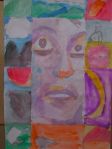
And that’s just a glimpse into my high-stakes-test-free classroom. Whenever I did this kind of teaching in America it was always done covertly with my eye out the window, watching for the test prep police. Now I’ve come out of the closet….as a creative teacher whose not afraid to inspire my students, not afraid to step outside of the box, and not afraid to trust my own expertise.
I think I’m still afraid of zombies though, especially ones wearing super scuffy shoes.


